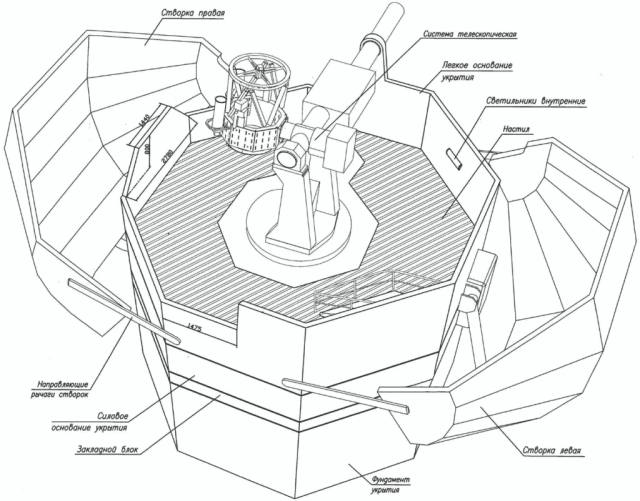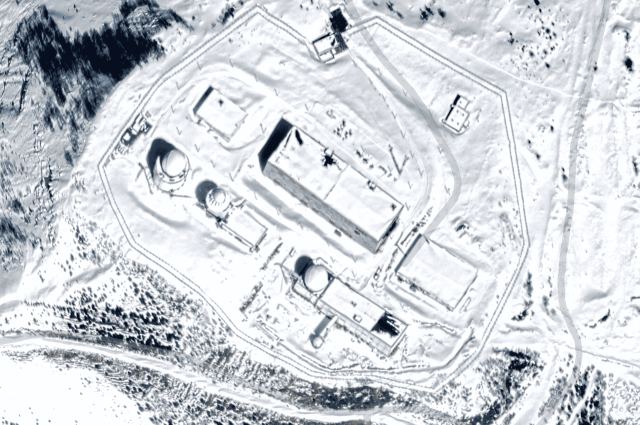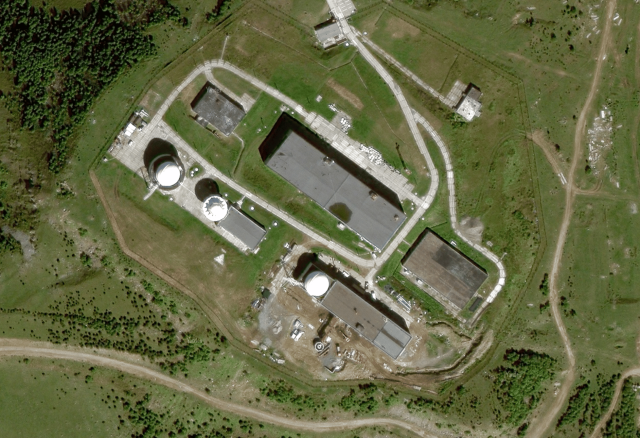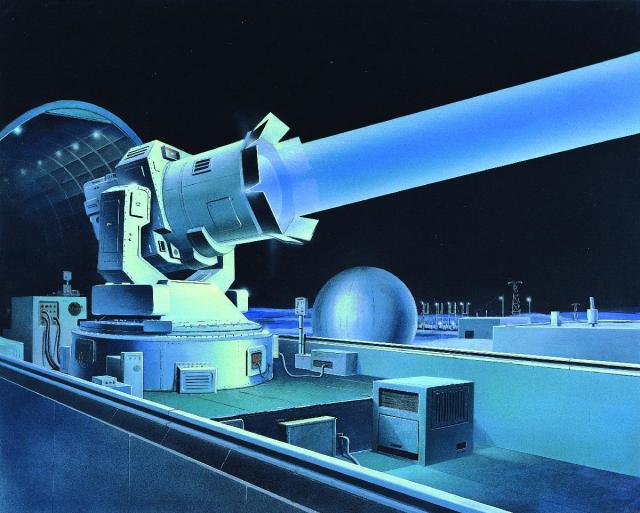The availability of high-quality and up-to-date data from Earth remote sensing satellites is growing every year. Companies such as Capella Space and Maxar Technologies have been offering unprecedented cheap high-resolution radar and optical images of the Earth's surface for several years in a row. This allows civilian analysts to observe military installations around the world and find interesting artifacts.
In the Soviet Union, Karachay-Cherkessia (then an autonomous region, now a republic) became home to many civilian and military facilities related to the study of outer space. Along with the colossal RATAN-600 and BTA telescopes, instruments and structures created in the interests of national defense are located in the Caucasus Mountains. For example, the Krona complex, consisting of several radars and optical devices designed to detect, track and identify vehicles in near-Earth space.
Conceived at the turn of the 1960s and 1970s, partially completed only in 1989 and put into trial operation only by 1999, this object initially assumed not only monitoring of satellites, but also participation in their possible destruction. Namely, as a means of target designation for interceptor fighters with anti—satellite missiles in service. After the collapse of the USSR, these planes remained with Kazakhstan, so an alternative was needed. As the new investigation of the resource shows The Space Review, its creation is in the final stages.

Drawing of a shelter for the 30ZH6MK optical system
Image source: JSC NPK SPP
The most obvious proof of the expansion of the functionality of the "Crown" were satellite images taken over the past few years. They clearly show that construction works are underway near the building on which the equipment of the receiving and transmitting channel of the complex is installed (a large building with one dome on the roof of the north-western end). Next to it, the foundation for another dome was erected and a covered passage to it was constructed. To establish the purpose of this extension, the authors of the material inThe Space Review analyzed a variety of open sources: documents of government contracts, scientific papers of well-known participants in related projects, as well as court decisions and accounting documents of contractors.
As a result, it was possible to establish that the extension belongs to the project with the code "Kalina". In fact, it is a combat laser designed to dazzle Earth remote sensing satellites. Potentially, it can not only temporarily block the operation of optical sensors, but also damage them permanently.
How functional this development is is not known for certain, but its existence is almost beyond doubt. When preparing an investigationThe Space Review confirms various works within the framework of "Kalina" were found in no less than three independent sources.

Google Maps updated most of the globe's surface in 2022. Considering that the Chapal Mountain, on which the "Crown" is located (in the image) still covered with snow, the pictures were taken no later than the beginning of April
Image Source: Google, Maxar, CNES

The dating of the images on Yandex maps for this part of the earth's surface is 2018, however, inaccuracies are possible (2019 is indicated in the investigation). In any case, these are earlier snapshots than those used by Google services
Image source: Yandex, CNES, SCANEX
Theoretical preparation of the project began at the turn of the century, and by 2011 Kalina received funding for the implementation of "in metal". It is assumed that the development is more or less related to the notorious "Peresvet". The latter has been in trial operation since 2018, and in 2020 it underwent a "baptism of fire" in Syria, as Kommersant wrote .
A number of technical details about the modernization of the "Crown" within the framework of the "Kalina" project can be found online at the request of 30ZH6MK (the index of the "blinding" satellite installation) and 14C235 (the index of the "channel" of the radio-optical complex). Presumably, a solid-state laser with adaptive optics is used as the main means of non-destructive destructive impact on space targets.
Among other things, the implementation of the project strongly depends on high-tech developments of leading Russian physical institutes (for example, Bauman Moscow State Technical University) and productive electronics that are scarce under sanctions. In addition, at least one of the contractors underwent liquidation due to financial problems.
Various projects of laser anti-satellite weapons have been developed in the USSR since the 1950s. At first, the technological level of the industry of that time did not allow testing theoretical calculations in practice. Later, by the mid-1960s, several laser weapons programs were launched at once, among which there were those aimed at threats in near-Earth space. Nevertheless, domestic engineers and scientists failed to achieve significant success.
The most noticeable result in this area is the laser—optical locator (LOL), which is also the receiving and transmitting channel of the Krona complex. This installation allows you to obtain the most accurate data on the distance to the spacecraft, as well as to evaluate their shape and structure by the characteristics of the reflected beam. The results of Kalina's development, if completed, should be extremely interesting from an engineering point of view. In the XXI century, laser technologies, including weapons, are becoming more and more important.

